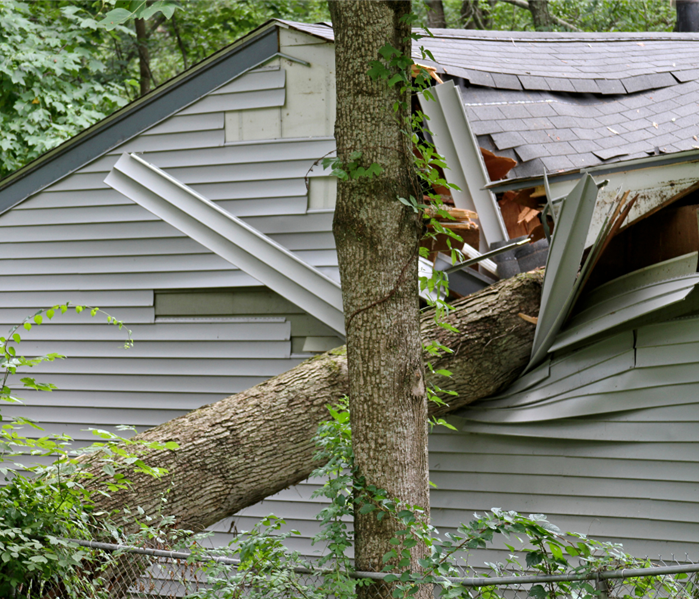Prevention and Protocol- What to do Before and After a Storm
1/11/2022 (Permalink)
Far too many relate to the following scenario:
A storm is on the radar, and you think you have done all you can to prepare for minimal damage, but you still find yourself with unforeseen damages in the wake of it. When this happens, you can feel like your entire world has been turned upside down! It's overwhelming, and it's challenging to get organized and decide what to do first. So many home and business owners feel confident in the prevention plan, and yet they lack the protocol needed to handle the aftermath of a storm and natural disaster. With a task as big as storm recovery, there may be more steps needed in some cases, so get to planning now! Here are our top 3 steps to take so you can be prepared if a storm damages your home or business:
1- Stay alert and proceed with caution.The national storm damage service site offers deeper insight to identifying storms of any kind and the potential dangers involved, such as injury. The first thing to ensure is that all household, or business employees are safe and out of harm's way. This can be done by checking for hazards like broken glass, exposed nails or screw, etc. Piles of debris or unsteady structures should be identified too. Further, you want to ensure that there are no other risks that can be avoided in the immediate future. Once you’re certain you and your household members are safe and unharmed, take the necessary precautions to avoid injuries. The last items are extremely important and at the top of the danger radar. Staying away from power lines in the area and checking any smells associated with gas is crucial. Shut off all valves to prevent continued danger.
2- Assess and document next. There are many steps ahead, and professionals who can help you carry them out, but the more info you gather, the better! Once the storm has passed, you will have some time for the insurance company to get involved, so go ahead and take as many pictures as you can. The more you have, the more likely you are to get the best compensation for your loss. Be sure to take pictures of any interior and exterior damage to your home- knowing that it could have structural damage that is not seen. In the notes taken, be sure to cover the following:
- Roof damage. Try to identify any holes, leaks, dents, gutter damage, or missing shingles. If extensive, call a local roofer for a second opinion.
- Exterior siding damage. Rain can cause damage to siding and strong winds can tear it right off, so check this even if the storm seemed moderate.
- All damage to windows and doors. Outside of the damage from the wind itself, the flying debris can affect even larger objects like windows and doors.
- Moisture damage. Once water makes its way into your home, mold will begin to develop in insulation, wood, furniture, and carpeting.
- Fire damage. Downed power lines or water in the outlets of electrical equipment can create shorts and cause fires.
3- Stay detailed, organized and keep receipts. Your homeowner's insurance can be a lifesaver in "getting back to normal," but the agents need your help along the way. Documentation is HUGE! save all receipts for materials, labor and even miscellaneous items in the aftermath to ensure fair reimbursement. Knowing your policy is your responsibility too. Make sure you fully understand your coverage- from tree damage to flood damage, because not all standard policies cover such things. If flood damage is not covered in your policy, it is wise to get it on an additional one. Most homeowners insurance policies cover:
- Weather damage: This typically includes damage due to hail, wind, fire, snow, and more.
- Non-weather events: Common non-weather events are actions like theft and vandalism.
- Sudden/accidental events: This includes situations like a water pipe breaking or a water leak.
If you are living in an area labeled "high storm risk," you will want to be thorough with an agent that has experience in that field. There are many options outside of standard policies, so shop around before making the decision.
There is a lot to do, and "off-season" is a time to not rest on your prevention laurels, so get ahead of the disaster today!






 24/7 Emergency Service
24/7 Emergency Service